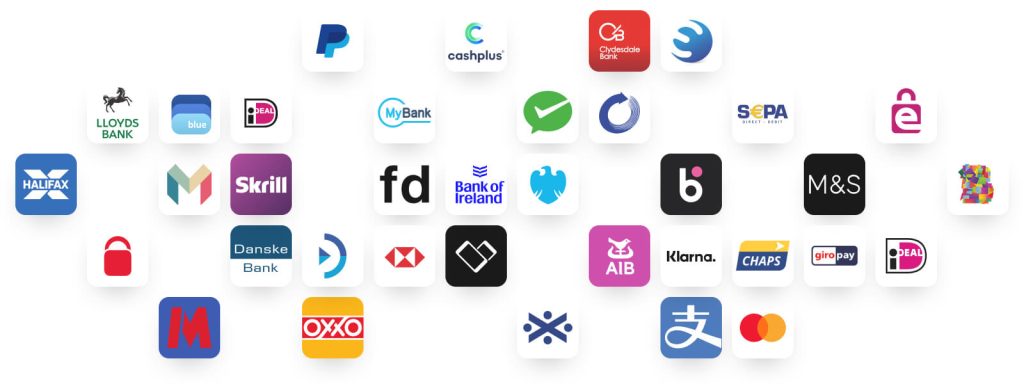If there’s a topic we’ve missed, let us know, and we will be happy to dive into it.
- How to create, build, set up, and start a crowdfunding platform with expert insights & Fondy’s payment solutions
- App vs platform: discover the difference between an application and a platform for business with Fondy’s solutions
- Simplify B2C payouts for marketplaces and the gig economy with Fondy
- Flexible payout schedules and seamless settlement payouts for two-sided platforms
- Boost your growth with automated payouts by implementing payout automation on your platform
- International payouts with our innovative system for two-sided platforms
- Product vs Platform: exploring the benefits and choosing the right payment solution
- How to accept payment on marketplaces: a guide to streamline your platform
- How to create a platform: step-by-step guide for building an online success
- What is an online platform or marketplace platform: key insights & payment solutions
- How does marketplace work: a focus on online payments and payouts
- How to create a marketplace website with payment solutions designed to build growth
- Ecommerce Platform vs Marketplace: key differences and how to choose the right payment solution
- What is a SaaS platform: meaning, examples, and payment solutions to boost their performance
- The role of advanced APIs in enabling seamless payment flows for MedTech innovators
- Maximising positive impact: the synergy of AI, sustainability, and comprehensive payment solutions
- Deconstructing payment processing
- How to accept payments on social networks?
- What are the best payment gateways for WooCommerce?
- What is the best payment gateway for marketplaces and platforms?
Product vs Platform: exploring the benefits and choosing the right payment solution

Introduction
When people talk about growing a business in today’s digital environment, the conversation often turns to whether it is better to focus on building a product or to establish а platform. This question often phrased as product vs platform might seem straightforward at first, but there is more complexity beneath the surface. Although both models have their own merits, the choice between them can profoundly affect your capacity to scale, the kind of user experience you provide, and the way you handle financial operations. In addition, the right payment solution can support whichever model you select. By looking closely at what each model truly is, investigating the difference between them, and seeing how proper fintech tools such as Fondy Flow can make everything smoother, you can gain clarity on your optimal strategy.
What is a product and what is a platform
A product can be a tangible item, a digital tool, or even a service that is sold to users with a more traditional, one-directional approach. Think of a classic software package developed and distributed by a single company to its customers. The relationship is fairly linear and does not usually go beyond the company-customer paradigm. A platform, on the other hand, is designed to be an ecosystem — an environment that allows multiple parties to interact and exchange value. Where a product might have a single offering, a platform serves as a hub, connecting different users, service providers, or organizations. By understanding these distinctions, you begin to see why the choice between product and platform can strongly shape a business’s future.
Yet, this what is only part of the equation. The question quickly becomes what difference is there between simply developing your own in-house product and constructing a platform that allows third parties to connect? The difference lies not just in the technology or the user base, but also in aspects such as revenue streams, scalability, and operational complexity. A platform by definition scales differently, since it leverages the network effects of multiple participants, while a product often depends more heavily on direct sales or subscriptions from individuals. This topic can become more complex when you realize how important payment solutions are in keeping everything running efficiently, whether your main focus is on selling a standalone product or enabling multiple vendors on a platform.
The product model
A product is frequently developed to solve a specific issue, fulfil a single need, or provide a targeted solution. If your business revolves around a single piece of software, like an app that provides design templates, you are dealing with a product model. The revenue might come from license fees, one-time purchases, or monthly and annual subscriptions. Customers pay for direct access to your creation. In many cases, the marketing and brand identity revolve around that single offering. There is typically less logistical complexity in managing relationships because you deal primarily with your direct customers or users.
The platform model
A platform, conversely, is a system that enables a range of interactions between different stakeholder groups. Booking services that connect travelers with property owners, e-commerce marketplaces that host multiple sellers, and freelance sites that match providers with clients all represent strong examples of platforms. In each of these scenarios, the company behind the platform does not just sell a single product; instead, it facilitates an ecosystem. The revenue could come from various sources, such as fees on transactions, subscriptions, or advertising. The direct interaction on the platform is often between the sellers or service providers and the customers. As the platform owner, you support the environment in which these exchanges occur.
The difference between the two models
The difference between a product and a platform extends well beyond the number of participants. Fundamentally, these models vary in how they generate revenue, scale to new markets, and handle ongoing user engagement. A product model is typically more controlled and straightforward. You create one offering, then you work on marketing it, processing transactions, and retaining users. The advantage here is that you usually retain direct control over the entire user experience, from onboarding to payment to support.
A platform model is more multifaceted. Your role is closer to that of a facilitator, ensuring smooth interactions, reliable payment flows, and efficient communication. You may not have direct control over every product or service offered on your platform, yet you do control the rules, guidelines, and structure that help all parties succeed. This heightened complexity can create tremendous growth potential: each new user or seller can bring in more value, which in turn attracts even more participants. However, with that potential come higher administrative and technological demands.
Network effects and scale
When you consider the question of product vs platform, a key difference lies in the nature of network effects. A platform thrives on network effects: the more buyers and sellers you have, the more each side benefits from the increased activity. In a product-based model, you primarily rely on continuous innovation, brand strength, and a loyal customer base to grow. With network effects, a platform can scale swiftly once it gains momentum, but it also means you must carefully manage the dynamics between participants and stay attentive to onboarding, security, and payment processes.
Benefits of focusing on a Product
Despite the complexities that platforms might handle, there are still strong arguments for building a standalone product. If your business idea revolves around a niche solution perhaps an app that offers specialized design tools — you can focus on refining that single offering. You might feel greater control over user satisfaction because you know exactly what your product does and how it is presented to your audience. This narrower scope can also make it easier to measure user feedback and pivot your roadmap based on concrete data.
Start-ups that opt for a product model can benefit from simpler revenue prediction — subscriptions or one-off purchases are easier to track. You can tailor your marketing and sales efforts to communicate the unique value proposition of your product, emphasizing how it solves a very specific problem. By iterating quickly, you can remain lean and agile. However, if you aim to expand to a broader user base or consider new offerings, you will need to invest in continuous product development and marketing outreach.
Key advantages of building a Platform

The primary attraction of building a platform is the potential for exponential growth. When executed properly, a platform can become a magnet for both providers and customers. Booking sites for accommodation, for instance, benefit from the fact that each new property or host increases the platform’s appeal to potential guests, which in turn encourages more hosts to join, triggering a virtuous cycle. A platform can diversify revenue streams: from transaction fees and listing fees, to premium listings, advertising, or subscription tiers for sellers.
Diversified revenue streams
Platforms can facilitate more innovative business models. You can test paid promotions or highlight certain providers in exchange for a higher fee, which would be more challenging to implement in a straightforward product environment. The challenge, though, is that you must invest in robust infrastructure to ensure the platform remains stable and secure as it grows.
Challenges faced by both models
Although a product tends to be simpler in structure, it can also face growth constraints. You might discover that your single offering has limited market potential unless you create additional features or expand into new niches. Another challenge is the constant push to innovate; if you do not keep adding value, you risk losing relevance to competitors. A product must also handle user expectations around updates, support, and pricing structures.
A platform, for its part, faces its own unique issues. One of the biggest is the “chicken and egg” dilemma of attracting enough sellers or service providers to entice customers, and vice versa. You need a stable environment that can manage a surge in user activity, as well as a robust set of rules or guidelines that facilitate trust and fair dealings. Payments can be an especially intricate area: if you have vendors and customers on your platform, you need a way to accept payments from buyers, split those payments if necessary, and then pay out the correct amounts to each vendor.
Why payment solutions matter

Whether you operate a product-based model or a platform model, one element unites them: the crucial nature of seamless payment operations. For a product, user trust is heavily influenced by the ease of the checkout process, the convenience of paying in local currencies, and the confidence that refunds or cancellations can be managed smoothly. If your product is subscription-based, then recurring billing must be handled reliably, and you might also need to manage discount codes or different subscription tiers.
On a platform, managing payments becomes even more complex. You might need to take commissions while distributing funds to each vendor, or process transactions in multiple currencies if your platform is international. Managing different tax regimes and handling compliance checks for sellers can also become time-consuming. That is precisely what fosters the difference between a successful platform that continues growing and one that stagnates. Reliable, flexible, and secure payment solutions reduce friction for both sellers and buyers, allowing you to attract quality participants on both sides.
Fondy Flow as an all-in-one fintech solution
This is where Fondy Flow offers a comprehensive way to address payment needs. Designed specifically for two-sided platforms and marketplaces, it helps by bringing together all the necessary tools — accepting payments, enabling split payments, handling instant or delayed payouts, and even assisting with automated onboarding for sellers. By creating a single environment for these processes, Fondy Flow aims to simplify the underlying financial infrastructure for a platform. Rather than juggling multiple third-party solutions or writing complicated in-house code, you can rely on one partner for virtually every aspect of your payment journey.
Fondy Flow also supports virtual IBAN accounts, which can be especially beneficial for startups looking for a quick, no-fuss means of holding and moving money. The focus on clarity is crucial: transparent pricing without hidden charges helps new businesses budget more effectively. With minimal or no-code integration options, you can set up Payment Links, Invoices, or connect to widely used CMS solutions like Shopify, Wix, and WooCommerce. The real-time analytics dashboard aids in monitoring everything from successful transactions to potential areas where customers might drop off.
USP for startups
If your organization is in its early stages, Fondy offers multiple advantages. The simple payment link or invoice approach is invaluable if you do not want to overcomplicate your initial rollout. You can always integrate more advanced features later, such as multi-currency acceptance or local payment methods like BNPL, Apple Pay, and Google Pay. Having a user-friendly design ensures that you spend less time on guesswork and more on refinement. The entire point is to make it easier for you to focus on your core offering, whether that is developing a stellar product or building out the core capabilities of your new platform.
When looking at product vs platform, many startups may still be experimenting with their direction. One month you might be focusing on building a single offering for a tight-knit user community, while the next you realize that the real opportunity lies in connecting multiple types of users. With a flexible payment partner, you can pivot or expand without re-writing entire financial workflows. You can add new methods of payment acceptance or begin using split payments for a newly introduced vendor feature. Real-time analytics allow you to see exactly how these changes affect your bottom line.
USP for companies
Larger, more established companies typically require advanced capabilities to ensure compliance, data integrity, and guaranteed scalability. Fondy Flow’s cloud infrastructure can scale up the system tenfold in a single day, which is vital if you expect sudden increases in user volume or plan to launch in multiple territories. A dedicated manager to assist with migration ensures that the transition from another provider or an in-house solution is smooth and stress-free. For a platform dealing with both local and international sellers, the integration of multi-currency acceptance with automated KYC and AML checks for each individual or business user becomes a game-changer.
Although the difference between a smaller startup and a larger company is often in resources, both share a need for transparency and ease of use. Enterprises might prefer more custom reporting or advanced analytics. By providing a robust API and an environment that can handle more complex data analysis, Fondy Flow appeals to that requirement as well. This synergy makes it possible for companies to expand into new markets with full confidence that their payment system can handle the additional load and complexity.
Key functionalities: from accepting payments to payouts
Whether your focus is on product vs platform, the hallmark of a strong fintech solution is that it addresses every stage of the payment lifecycle. For a product-based business, that might revolve around subscription payments and refunds. For a platform, it usually includes accepting funds in multiple ways (cards, Apple Pay, Google Pay, BNPL, local payment methods) and then splitting those funds among various stakeholders. If your platform is global, multi-currency support is crucial.
Accepting payments
The smoother the transaction process, the more likely a user is to complete their purchase. Real-time analytics show you exactly where you might lose a user in the checkout flow, enabling rapid improvements.
Payouts and seller onboarding
Platforms often need well-organized seller onboarding. You may be dealing with hundreds or thousands of independent sellers, each needing verification. Automated KYC and AML processes remove the manual overhead of verifying each applicant. Once verified, sellers can receive payouts via virtual IBAN accounts, direct IBAN transfers, or even mass payouts, depending on their region and preference.
The role of transparency and flexibility
In exploring the difference between these models, do not underestimate how vital transparency is to building trust with end-users. Customers want to know they are not being stung by hidden fees. Sellers, if you are running a platform, want a clear picture of their costs and potential profits. A solution that offers transparent pricing from the outset helps businesses be upfront with their audiences, preventing disputes or dissatisfaction further down the line.
Choosing the right path and ensuring success with Fondy
As you weigh up product vs platform, consider both your short-term and long-term objectives. Would you benefit more from creating a single, high-performance product that meets a very specific need? Or does it serve your future plans to become a marketplace or ecosystem that enables multiple interactions? Regardless of your decision, the question of what your payment infrastructure looks like remains critical. Payment solutions can make or break your user experience, so it is worth devoting time to that choice.
Fondy Flow aligns with businesses throughout the entire process. If you start as a product-based venture but later realize a platform model is more lucrative, you can scale your payment ecosystem with minimal friction. If you are already operating a bustling platform, you can integrate advanced features like automated seller onboarding, split payments, and multiple payout options. The real strength here lies in covering everything from transparent pricing and no-code integrations to advanced APIs, so you can evolve at your own pace.
Conclusion: a clear path to growth with Fondy
The debate surrounding product vs platform can lead you in many directions, from clarifying your target audience to framing your revenue model. The core point is that whichever route you choose, you need a strong payment infrastructure that can adapt to both the demands of your business and the evolving expectations of users. Seamless transactions, transparent splits, instant or delayed payouts, and an automated seller onboarding process all make a huge difference between a friction-filled experience and one that impresses users.